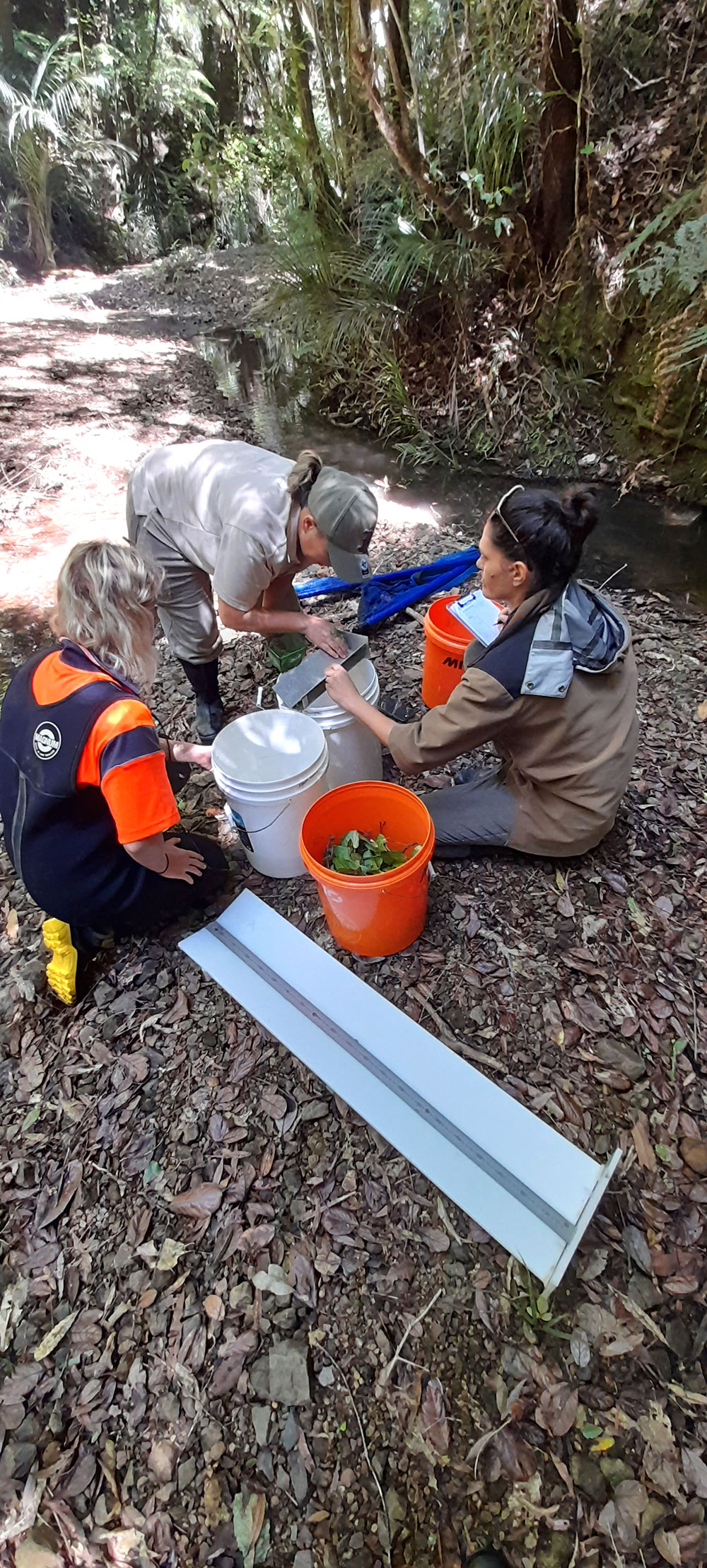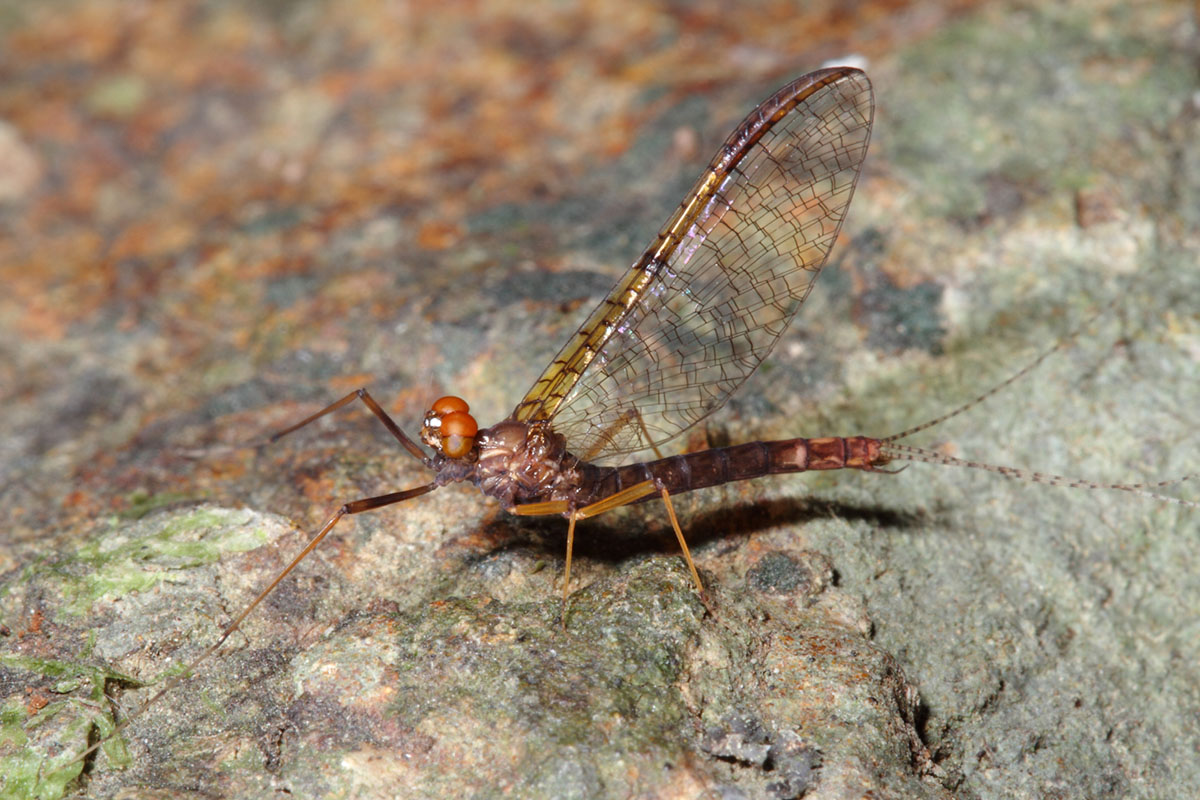Mayfly
The mayfly is the oldest surviving winged insect on the planet and is found throughout New Zealand and the world. They are most widely known for their brief adult lifespan and emerging from lakes and rivers in vast swarms.
They spend most of their lives in freshwater that needs to be cool and clean for them to survive. This makes them important indicators of environmental health. They are a critical part of our freshwater ecosystems, contributing to nutrient cycling and providing a vital food source for fish, birds and bats.
Mayflies are renowned for their short adult lifespan of one or two days, when their only purpose is to reproduce. Huge swarms form at lakes and rivers, where they hover above the water to mate in flight. After mating the female falls onto the surface of the water to lay her eggs and both males and females die, their purpose complete.
The eggs sink to the lake or riverbed where they stick to stones and plants. After several days the eggs hatch and aquatic nymphs emerge. The nymphs spend up to two years living on the lakebed, feeding on algae and plant matter, before emerging from the water as adults to complete the cycle again.
New Zealand is home to a variety of mayfly species and new species are still being identified, including exciting discoveries in our own backyard. In 2022 NRC, and Ngāti Kahu o Torongāre conducted a study in Tāika Forest in the Whangārei rohe (district), as part of a Biodiversity Values Assessment, using a variety of surveying techniques and with the support of Steve Pohe of Pohe Environmental.
The study confirmed the presence of the Threatened – Nationally Critical mayfly; Zephlebia aff. pirongia. This very rare species is only found in Whangārei rohe.
The survey found 64 species of freshwater invertebrates in total and 11 species of conservation interest (At Risk or Threatened species), including two species not previously known to science, demonstrating the rich biodiversity to be found in our unspoiled ecosystems.
Mayfly facts
- Over 3,000 species of mayfly worldwide
- Important indicator of the health of freshwater ecosystems
- Vital food source for birds and fish
- Unique lifecycle from egg to nymph to adult mayfly
- Known for their ephemeral adult lifespan and emerging in huge swarms
How you can help
The mayfly’s future depends on healthy freshwater. We all have a part to play in ensuring that we keep our lakes, rivers and streams clean.
Freshwater pests are already established in some of Northland’s lakes, rivers and stream and pose a serious threat to these ecosystems. If you visit our lakes and rivers, you can help prevent the spread by using the ‘Check Clean Dry’ method.
CHECK equipment and remove any fragments of plants and weeds
CLEAN all equipment that has been in contact with water
DRY equipment thoroughly and wait for at least 48 hours before entering water again
If you have a lake or stream on your property, you can help by:
- Fencing for stock exclusion
- Restoring riparian margins by planting native vegetation
- Restoring wetlands
- Practising water-friendly farm management practices
- Minimising nutrient overloading.

NRC and Ngāti Kahu o Torongāre conducting freshwater surveys in Tāika Forest.
The draft Freshwater Plan Change
With input from tāngata whenua, the primary sector, and the wider community, Northland Regional Council is developing a plan to improve freshwater health in Te Taitokerau. Sadly, most of the waterways in Te Taitokerau are in a poor state. It’s important that we improve our freshwater to provide habitats for native plants, animals and insects – like the mayfly.
Learn more about the draft Freshwater Plan Change at wai-it-matters.nz

Mayfly (Zephlebia aff. pirongia) Credit Olly Ball Steve Pohe Collection.
